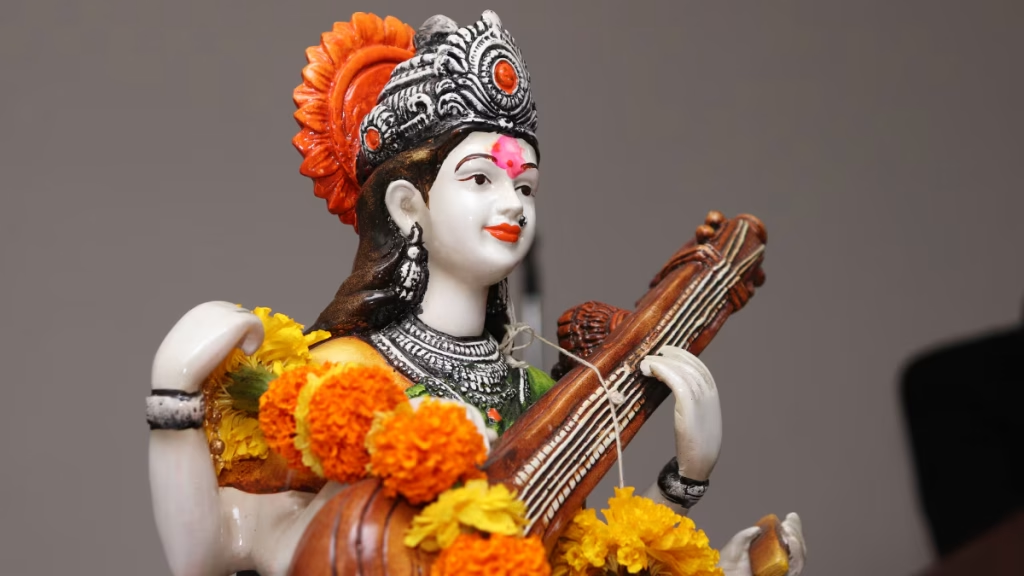Saraswati Puja Date Muhurat 2025!
The upcoming Saraswati Puja 2025 has sparked discussions regarding its exact date, with varying opinions between February 2 and February 3. According to prominent Panchangs (Hindu calendars), February 3 has been confirmed as the most auspicious date for celebrating this significant festival dedicated to the Goddess of knowledge and wisdom.
Table of Contents
Saraswati Puja Date Muhurat 2025: Tithi and Timing
The Magh Shukla Panchami Tithi, which determines the date of Saraswati Puja, begins on February 2 at 12:45 PM and continues until February 3 at 11:48 AM. Major Panchangs, including Hrishikesh Panchang, Vaidehi Panchang, and Darbhanga Sanskrit University Panchang, unanimously support February 3 as the most auspicious day for performing the puja rituals.

Auspicious Muhurat Details
The primary puja muhurat falls on February 3, 2025, aligning with the Udaya Tithi (sunrise-based timing). This timing is particularly significant as it coincides with the third and final Shahi Snan of Kumbh Mela, adding to its spiritual importance. The morning hours are considered especially favorable for conducting the puja ceremonies.

Resolving the Date Confusion
While some calendars like Panchang Diwakar suggest February 2 as the puja date (citing Panchami Tithi beginning at 9:15 AM), the majority of authoritative Panchangs and religious institutions across Bihar, Jharkhand, and other regions have confirmed February 3 as the correct date. This consensus is based on traditional scriptural calculations and astronomical alignments.
Read More: Budget 2025 Shake-Up: Why Sensex & Nifty Slid, and Who Came Out on Top
FAQs
1. Why is there confusion about the Saraswati Puja date in 2025?
The confusion arises from different interpretations of Panchami Tithi calculations, but most authoritative Panchangs confirm February 3 as the correct date based on traditional astronomical calculations.
2. What is the most auspicious time for performing Saraswati Puja on February 3, 2025?
The morning hours of February 3 are considered most auspicious, as they align with the Udaya Tithi and traditional worship timings.






